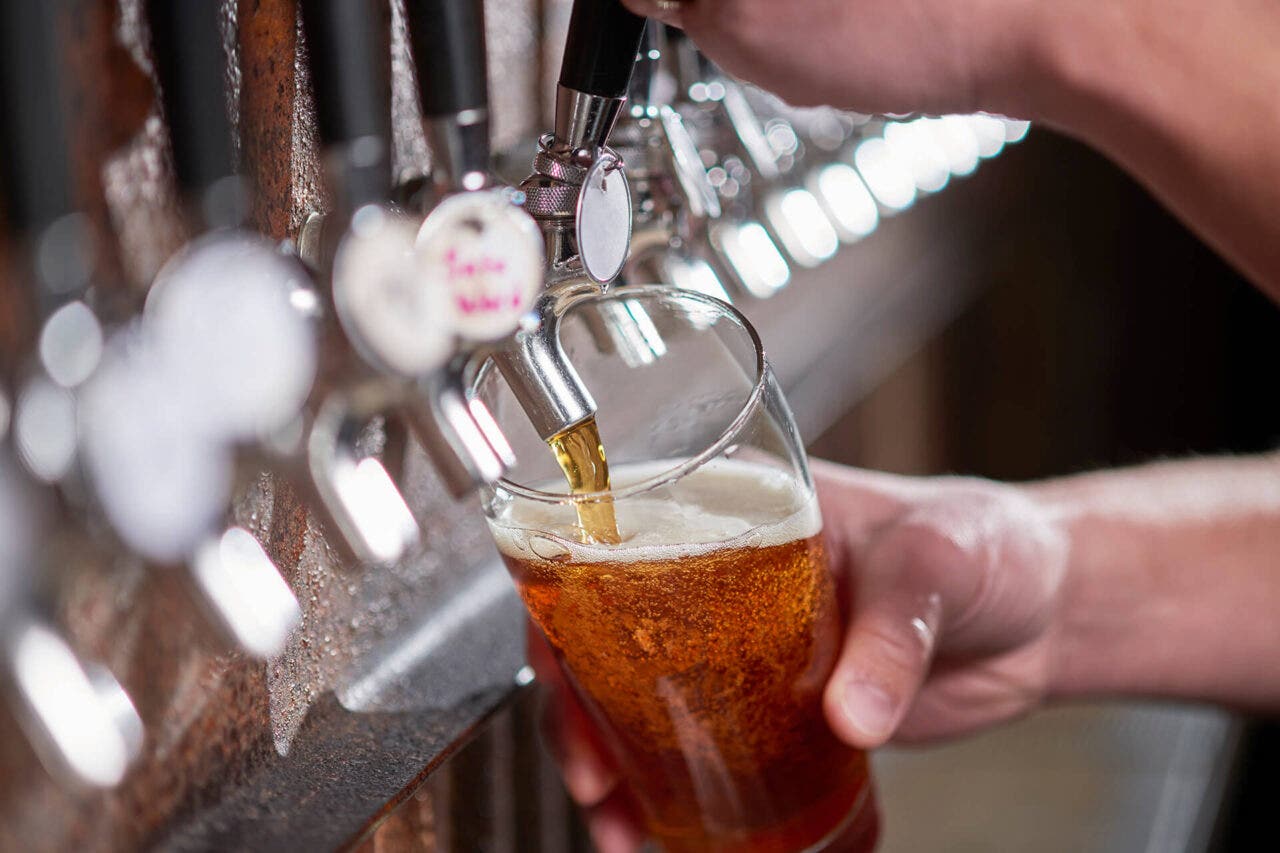Independent Craft
In this age of mergers, acquisitions and investments, it’s increasingly difficult to tell which brands still qualify as craft brewers. The Brewers Association, a trade group that represents small and independent American operations, defines a craft brewer as having an annual production of six million barrels of beer or less, with ownership or control by a non-craft brewer or brewing company limited to a maximum of 25%, and one that uses traditional flavors and fermentation techniques. To help guide conscientious consumers, the group unveiled an official BA Independent Craft Brewer Seal in June 2017 for its members to use. The “craft” mindset might have overrun the industry, but this insignia makes it easier to identify and support small, traditional and independent craft brewers; more than 3,200 craft breweries now employ the mark.
A Lager Renaissance
There was a distinct “back to basics” trend in 2017, and this year’s lager renaissance shows that the theme still resonates. Savvy beer lovers are seeking out well-made, balanced lagers, and often find them in American craft interpretations. Many craft lagers have been released this year, including Founders’ Solid Gold Premium Lager and Firestone Walker’s Firestone Lager. Brewers have raised their lager game to appeal to a broader audience as well as those who are “craft curious,” says Dave Engbers, president and co-founder of Founders Brewing Co. These lagers are leap years from large-brewers’ fizzy yellow water. They offer subtle complexity and drinkability without sacrificing flavor and quality.
The Haze Craze
In some capacity, India Pale Ales (IPAs) are annual fixtures on our trends list, because there’s always something new to try. This year’s hits are New England-style IPAs (NEIPAs), which are also known as juicy or hazy IPAs. While they’ve been on the rise over the past couple of years, this mouthfilling and incredibly fruit-forward IPA style has exploded in 2018. Their reach and distribution have grown beyond niche tasting-room-only selections. Three categories—juicy or hazy pale ale, IPA and double or imperial IPA—are now recognized by the Brewers Association Beer Style Guidelines, so fans can expect to see more releases to come. Love it or hate it, the haze craze is here to stay.
So Much Sour
While sour beers aren’t new, they’ve become surprisingly popular, appealing to beer lovers as well as wine lovers and cross drinkers who are fond of wine’s acidic twang. To make sours, “wild” yeasts or bacteria—like Brettanomyces, Saccharomyces, Pediococcus and Lactobacillus—are added during fermentation. These impart a distinct sour imprint as well as possible barnyard, animal or earthy tones. It may sound funky, but the best bottles boast serious personality and complexity. And while traditional sours are usually created through a second fermentation and long aging in barrels, a recent rise in kettle souring, where wild organisms are pitched directly into the kettle before a traditional fermentation, has allowed more brewers to jump on the style’s twang without the need for a massive barrel inventory or long cellaring times.
Sweet Liquid Treats
From donuts and s’mores to German chocolate cake and even banana bread, brewers are trying to create the liquid twin of their favorite sweets. So-called “pastry beers” have popped up everywhere, offering the promise of a comfort classic in a glass. It’s hard to resist their bold, rich flavors, lush mouthfeels and warming alcohol content. They’re often an easy sell for those that “don’t like beer” or, rather, don’t like the taste of traditional ales or lagers. It can be immensely satisfying to identify these familiar dessert table aromas and flavors. But a word to the wise: Share these brews. It’s easy to experience too much of a good (sweet) thing.
Hyperlocal
There are now more than 6,000 breweries in the United States. That figure represents an all-time high, and one that has more than doubled in the last four years. Of those breweries, more than 98% are classified as traditional craft breweries. Though such a sea of options might make beer choices a bit more difficult, it also offers more opportunity to drink local, as about 83% of drinking-age adults live within 10 miles of a brewery. These brewers have a positive impact on their communities, too. According to the Brewers Association, these businesses created more than 135,000 jobs in 2017, and American craft brewers donated an estimated $73.4 million to charitable causes throughout 2016. So if you haven’t explored your own backyard for delicious pours, there’s never been a better time to get out and drink local.
Published: July 10, 2018















